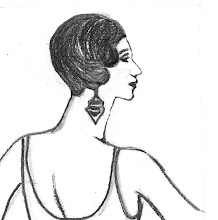
Madame De...
Max Ophüls' 1950s masterpiece.
28 October 2010- By Don Groves
It’s been a long wait for Max Ophüls' classic Madame de... to reach Australian stores: more than 50 years.
Full credit to Madman for acquiring Criterion’s transfer of the 1953 tale of a doomed romantic triangle, which critic Andrew Sarris hailed as the greatest movie ever. I wouldn’t go that far, chiefly because the plot hinges on a blatant contrivance: a pair of diamond heart-shaped earrings which implausibly keep turning up to delight or haunt their owner, Countess Louise de… (Danielle Darrieux), despite the fact they’re sold three times.
Still, that’s a minor and forgivable flaw in a film which is masterfully directed, impeccably acted and richly scored and costumed. General Andre de... (Charles Boyer) gave the earrings to his wife as a wedding present. Short of cash despite their opulent home and lifestyle, Madame de… sells the baubles back to the jeweller, and tells her husband she lost them. Fearing a scandal after the theft is reported in a newspaper, the jeweller informs the General, who retrieves the trinkets and gives them to his mistress. That luckless lass pawns them at a casino in Constantinople, where they fall into the hands of Italian diplomat Baron Donati (Vittorio De Sica), a friend of the General and his wife, who becomes infatuated with the Countess while her husband is away, and gives them to her. Far from being a good luck charm, the earrings bring grief to all three.
Darrieux, who looks stunning in an array of ornate costumes, is divine as a woman torn between her husband and her lover. Boyer is magnificent as a proud man who can tolerate affairs on both sides, but not the thought that his wife loves another man. And De Sica exudes both charm and regret as the debonair Italian who recognises he overstepped the peculiar codes of high society. Ophüls enhances the film with audaciously long, sweeping takes, including a memorable scene which sees the Baron and his lover dancing in one continuous movement over a period of days as they count the days since they’d seen each other.
Extras include audio commentary by Adrian Martin, Senior Research Fellow, Film and Television Studies at Monash University and, and Working with Max Ophüls: interviews with assistant director Alain Jessua, assistant decorator Marc Frédérix and co-writer Annette Wademant.
http://ww.sbs.com.au/films/movie/9661/Madame-De...-
Max Ophüls' 1950s masterpiece.
28 October 2010- By Don Groves
It’s been a long wait for Max Ophüls' classic Madame de... to reach Australian stores: more than 50 years.
Full credit to Madman for acquiring Criterion’s transfer of the 1953 tale of a doomed romantic triangle, which critic Andrew Sarris hailed as the greatest movie ever. I wouldn’t go that far, chiefly because the plot hinges on a blatant contrivance: a pair of diamond heart-shaped earrings which implausibly keep turning up to delight or haunt their owner, Countess Louise de… (Danielle Darrieux), despite the fact they’re sold three times.
Still, that’s a minor and forgivable flaw in a film which is masterfully directed, impeccably acted and richly scored and costumed. General Andre de... (Charles Boyer) gave the earrings to his wife as a wedding present. Short of cash despite their opulent home and lifestyle, Madame de… sells the baubles back to the jeweller, and tells her husband she lost them. Fearing a scandal after the theft is reported in a newspaper, the jeweller informs the General, who retrieves the trinkets and gives them to his mistress. That luckless lass pawns them at a casino in Constantinople, where they fall into the hands of Italian diplomat Baron Donati (Vittorio De Sica), a friend of the General and his wife, who becomes infatuated with the Countess while her husband is away, and gives them to her. Far from being a good luck charm, the earrings bring grief to all three.
Darrieux, who looks stunning in an array of ornate costumes, is divine as a woman torn between her husband and her lover. Boyer is magnificent as a proud man who can tolerate affairs on both sides, but not the thought that his wife loves another man. And De Sica exudes both charm and regret as the debonair Italian who recognises he overstepped the peculiar codes of high society. Ophüls enhances the film with audaciously long, sweeping takes, including a memorable scene which sees the Baron and his lover dancing in one continuous movement over a period of days as they count the days since they’d seen each other.
Extras include audio commentary by Adrian Martin, Senior Research Fellow, Film and Television Studies at Monash University and, and Working with Max Ophüls: interviews with assistant director Alain Jessua, assistant decorator Marc Frédérix and co-writer Annette Wademant.
http://ww.sbs.com.au/films/movie/9661/Madame-De...-


No comments:
Post a Comment